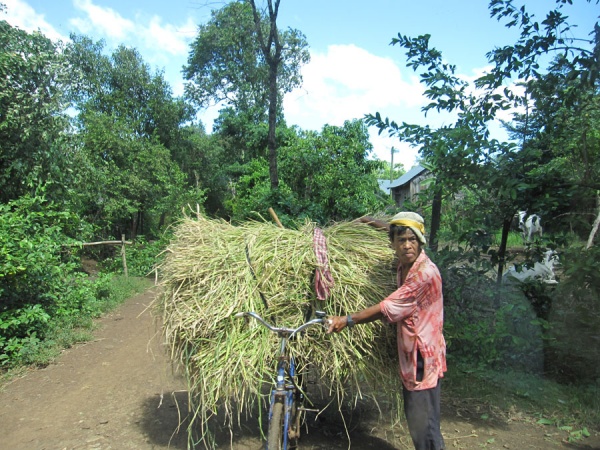Land Use and Natural Resource Utilization and Management in Kampong Cham, Cambodia
03.05.2010
-
SUBMITTED ORGANISATION :
-
United Nations University Institute of Advanced Studies
-
DATE OF SUBMISSION :
-
03/05/2010
-
REGION :
-
South-Eastern Asia
-
COUNTRY :
-
Cambodia (Kampong Cham)
-
SUMMARY :
-
During the last 40 years forestlands in Cambodia have decreased as a result of human activity, most notably period was from 1975 to 1979 under the Khmer Rouge. At that time people were forced to move from cities to remote areas to create reservoirs and irrigation canals and clear forest for agricultural purposes. Much of the biodiversity and many ecosystems were destroyed; including the area of Wat Chas village, Kampong Cham province. Some small woods, survived around dwellings forming a kind of agro-forestry system, provide a variety of benefits and inspire steps towards a more sustainable relationship with nature, such as: ・Replanting some species of herbs or trees around dwellings; It is a kind of agro-forestry system that provide foods and ingenious medicine for the local people. ・Applying organic fertilization through composting natural resource waste such as farmyard manure or plant residues; Organic fertilizer applied in farmlands increases soil organic matters, soil aggregation and capacity holding moisture. It is not only environmentally harmonized but also financially beneficial, specifically in terms of saving chemical fertilizer costs. ・Multi-cropping; Farming practice, growing two or more crops in the same space during a single growing season, allows for year-round coverage of farmland, reduces soil erosion, sustains humus topsoil, increases the competitive edge of cash crops and reduces the amount of pesticide and herbicide. Due to Wat Chas village’s continuing successful integration of these proven sustainable methods, it will be a model case of the natural resource utilization and management for Cambodia.
-
KEYWORD :
-
agro-forestry, multi-cropping, organic fertilization
-
AUTHOR:
-
Dr. Lalita Siriwattananon is a senior researcher at the Institute of Environment Rehabilitation and Conservation, Japan (ERECON) as well as a program manager at the Association of Environmental and Rural Development, Thailand (AERD). Her academic field is organic agriculture in soil and water conservation. In addition, she has been implementing various activities for rural development and natural resource management in Southeast Asia. Dr. Machito Mihara is a professor at Faculty of Regional Environment Science of Tokyo University of Agriculture as well as a director-general at the Institute of Environment Rehabilitation and Conservation, Japan (ERECON). His field is the environmental rehabilitation and conservation in rural areas of Asian countries. Dr. Kaoru Ichikawa is a consultant at the United Nations University Institute of Advanced Studies. She has been working for the programme of the Satoyama Initiative since 2009. Her research interests include structures and changes of landscapes which have developed as a result of human-nature relationships in regions with different natural and socio-economic conditions.
-
LINK:
-
Institute of Environment Rehabilitation and Conservation, Japan
International Society of Environmental and Rural Development, Association of Environmental and Rural Development, Thailand














